Award of Excellence
Vegetation House: House for Being the Medium of Plant Growth
Jheng-Ru Li, Student Affiliate ASLA and Chieh-Hsuan Hu, Student Affiliate ASLA, Graduate, National Chiao Tung University
Faculty Advisors: Yu-Tung Liu, Yuan-Rong Li, Shiau-Yun Lu and Chor-Kheng Lim
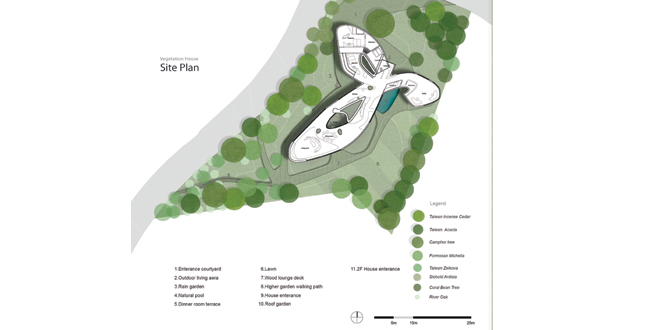
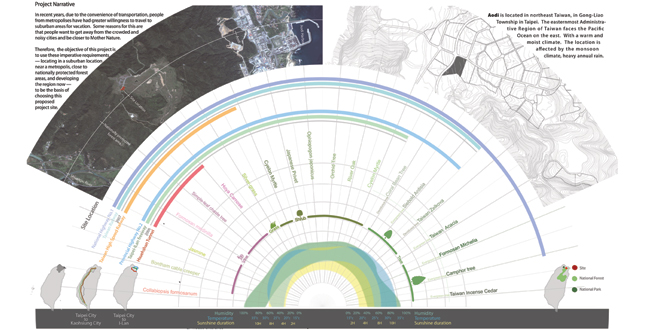 Close Me!
Close Me!Vegetation House: House for Being the Medium of Plant Growth
Download Hi-Res ImageImage: Jheng-Ru Li and Chieh-Hsuan Hu
Image 2 of 15
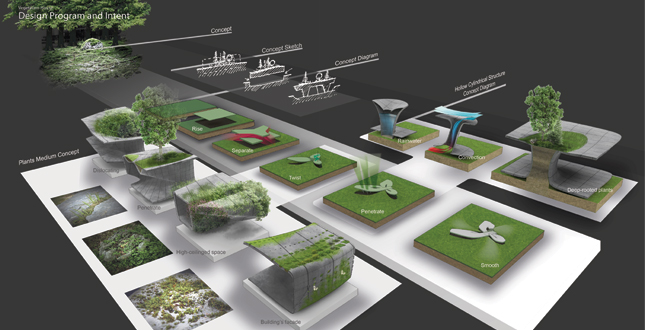
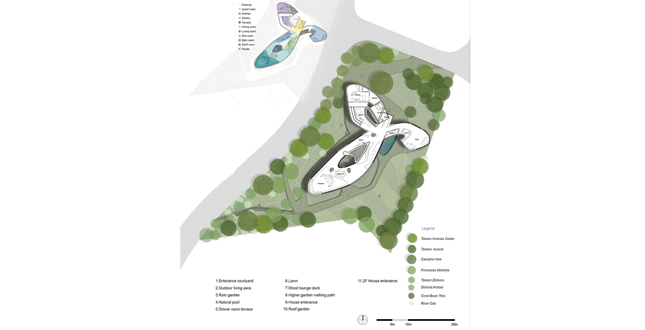
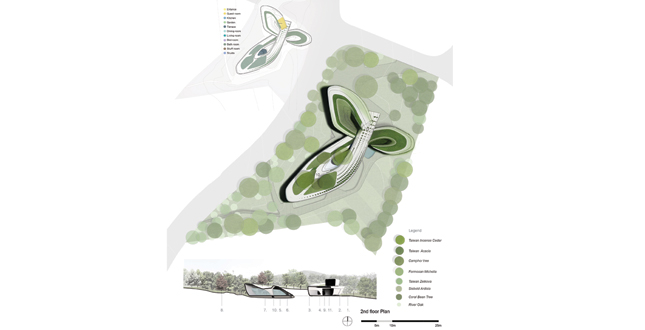
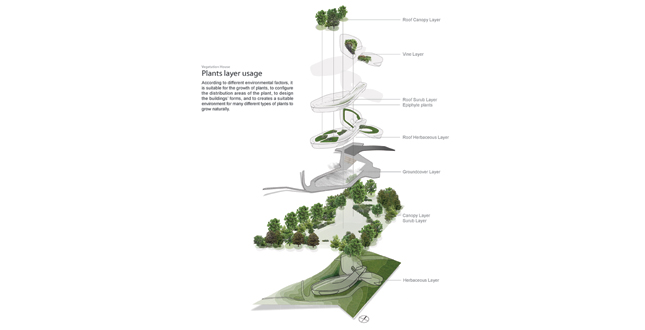 Close Me!
Close Me!Plants Layer Usage — According to different environmental factors, it is suitable for the growth of plants, to configure the distribution areas of the plant, to design the buildings' forms, and to creates a suitable environment for many different types of plants to grow naturally.
Download Hi-Res ImageImage: Jheng-Ru Li and Chieh-Hsuan Hu
Image 6 of 15
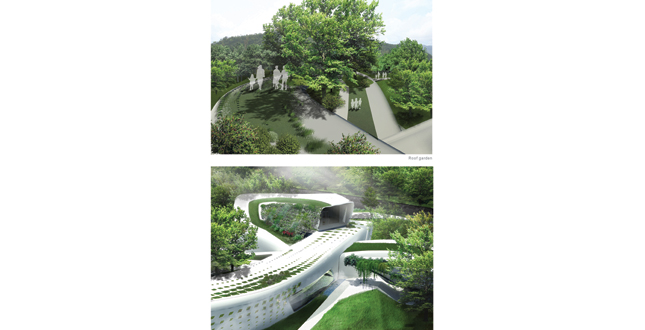 Close Me!
Close Me!Top: Roof garden. Bottom: The diversity of vegetation.
Download Hi-Res ImageImage: Jheng-Ru Li and Chieh-Hsuan Hu
Image 7 of 15
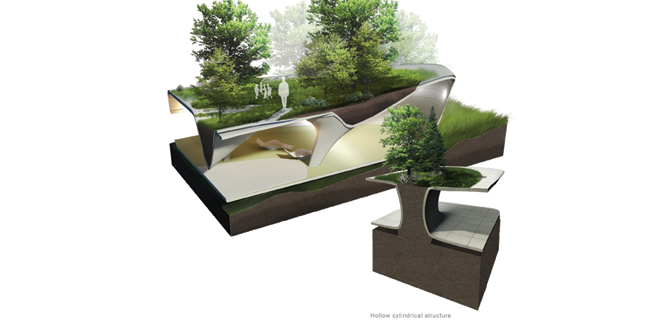 Close Me!
Close Me!Deep-rooted Plants — A configuration of deep-rooted plants at the center of the roof will provide sufficient sun and the growth of space, using a hollow cylindrical structure that will connect the land to provide thick soil and enough water for the deep-rooted plants.
Download Hi-Res ImageImage: Jheng-Ru Li and Chieh-Hsuan Hu
Image 8 of 15
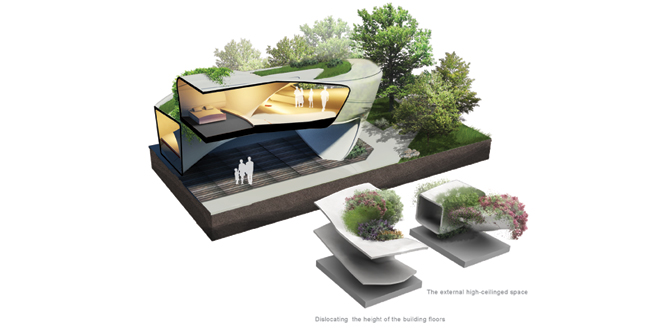 Close Me!
Close Me!Climbing Rattan Plant — By dislocating the height of the building floors and the external high-ceilinged space, we will create a half-sunshine space, to provide a cool and humid environment to climbing plants.
Download Hi-Res ImageImage: Jheng-Ru Li and Chieh-Hsuan Hu
Image 9 of 15
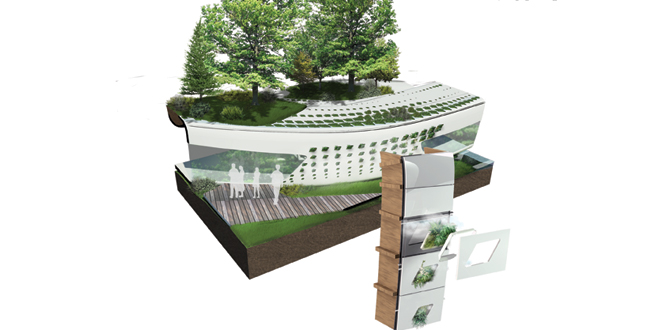 Close Me!
Close Me!Epiphyte Plants — The planters are designed with brick from the irrigation systems, so that seeds will attach to the vertical building facade naturally.
Download Hi-Res ImageImage: Jheng-Ru Li and Chieh-Hsuan Hu
Image 10 of 15
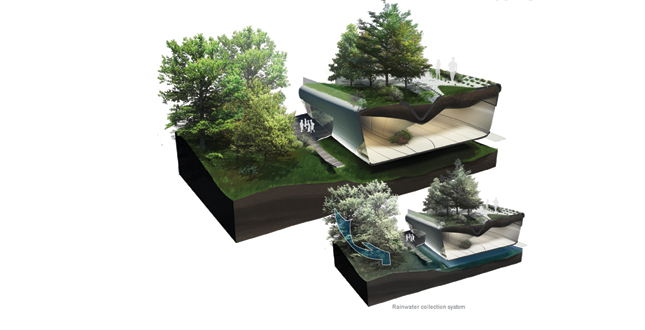 Close Me!
Close Me!Recycle and Reuse Rainwater — The lowest location of the ecologically poor site is selected to collect the keep the local rainwater and the humidity and temperature will be maintained.
Download Hi-Res ImageImage: Jheng-Ru Li and Chieh-Hsuan Hu
Image 11 of 15
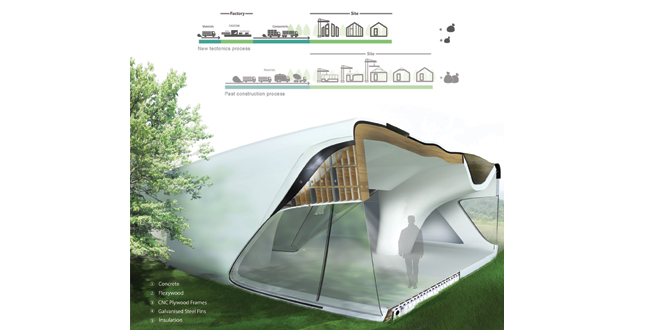 Close Me!
Close Me!New Tectonics — In order to reduce the construction time on the land and to avoid waste, the construction will remain limited to the local environment. In this proposed design, most components will be produced and processed completely in factories and then transported to the site to be assembled.
Download Hi-Res ImageImage: Jheng-Ru Li and Chieh-Hsuan Hu
Image 12 of 15
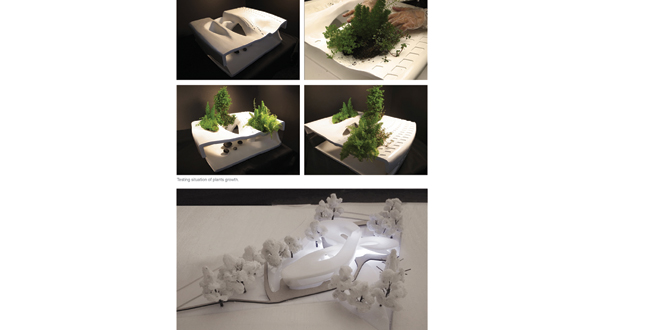 Close Me!
Close Me!Testing situation of plants growth.
Download Hi-Res ImageImage: Jheng-Ru Li and Chieh-Hsuan Hu
Image 13 of 15
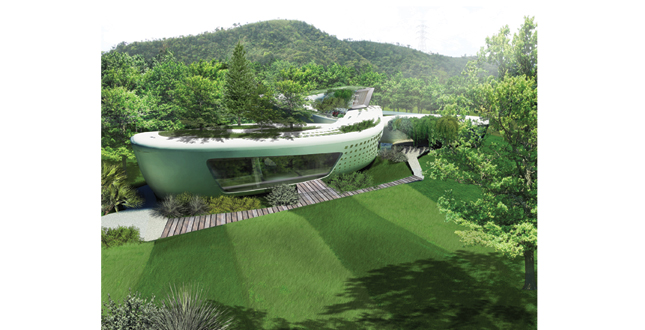 Close Me!
Close Me!Coexist with the Ecosystem — Using this approach can achieve peaceful coexistence between the building and the environment, under the premise of not destroying the land to build a farmhouse and maintaining the local ecosystem in this National Scenic Area, using means such as stones covered with plants, which, although existing, will not be awkward.
Download Hi-Res ImageImage: Jheng-Ru Li and Chieh-Hsuan Hu
Image 14 of 15
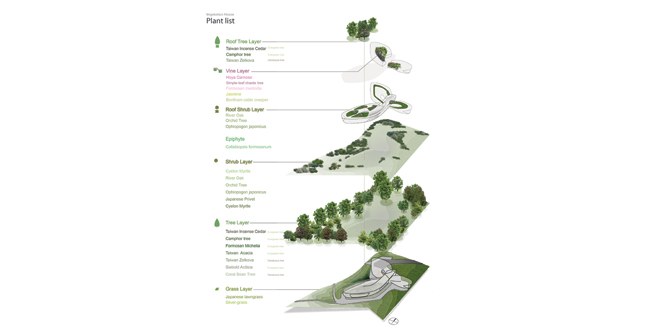
Project Statement
Concerning the problem of farmhouses in the suburban areas.This project is aimed to focus on whether the building creates a suitable environment for many different types of plants to grow naturally. Just as a stone in the forest is attached to a plant by the local environment, the building should not change or, worse, destroy the original ecosystem; it should coexist in harmony with the ecosystem and allow a diversity of plants to grow smoothly alongside it.
Project Narrative
—2011 Student Awards Jury
Context
Because Taiwan participates in the WTO, the government helps to change the usage of excessive farmlands in order to raise the competitiveness of local agriculture. The government promotes the construction plans of farmhouses, which improves both farmers’ quality of life and the environment for the production process. In recent years, due to the convenience of transportation, people from metropolises have had greater willingness to travel to suburban areas for vacation. Some reasons for this are that people want to get away from the crowded and noisy cities and be closer to Mother Nature. Such interest in suburban areas increases tourists’ assets, and that means it improves the economic situation there, giving rise to the problem that too many new buildings occupy the territory, and nature disappears. Therefore, the objective of this project is to use these imperative requirements — locating in a suburban location near a metropolis, close to nationally protected forest areas, and developing the region now — to be the basis of choosing this proposed project site.
Site Analysis & Current Situation
Aodi is located in northeast Taiwan, in Gong-Liao Township in Taipei. The easternmost Administrative Region of Taiwan faces the Pacific Ocean on the east. With a warm and moist climate. The location is affected by the monsoon climate, heavy annual rain.
In 2008, the well-known construction company launched the project during which the company invited 20 international architects to design creative farmhouses in the land close to Snow Mountain, which is a nationally protected forest area. If the farmhouse’s construction plan proceeds without environmental awareness, it will lead to an enormous environmental impact.
Design Program and Intent
Based on the existing conditions, several strategies are proposed in this project to deal with the balance between biodiversity and the living environment.
- Create the Diversity of Vegetation: Diversity is based on the plant analysis diagram, from the existing plants on the site and native plants in Taiwan. According to different environmental factors, it is suitable for the growth of plants, to configure the distribution areas of the plant and to design the buildings’ forms.
Deep-rooted plants: A configuration of deep-rooted plants at the center of the roof will provide sufficient sun and the growth of space, using a hollow cylindrical structure that will connect the land to provide thick soil and enough water for the deep-rooted plants.
Climbing plants: A climbing rattan plant growth environment requires a thinner soil layer, high sensitivity to humidity, and low sunshine duration. By dislocating them between the height of the building floors and the external high-ceilinged space, we will create a half-sunshine space, to provide a cool and humid environment to climbing plants.
Shrub plants: The ability of different species of shrubs plants to adapt for soil thickness, humidity, sunshine duration, and growth factors is broader, using an outdoor balcony on the second floor to disperse the growth locations. To achieve several different species of shrub plants scattered throughout the outdoor balcony, soil is evenly distributed in this project and restrict its thickness and size, as the sunshine duration and soil conditions are different.
Epiphyte plants: Regarding ferns and bryophytes, species of epiphyte plants on the building’s facade, the planters are designed with brick from the irrigation systems, so that seeds will attach to the vertical building facade naturally. - Improve monsoon winds: Aodi is under the strong northeast monsoon winds in the winter. In order to reduce the effect of monsoons on the circulation in the north building, windbreaks are planted in the north to block these gusts. Heightening the northeast facade will also reduce the strength of the northeast monsoon winds throughout the overall environment.
- Control humidity: The contact of climbing plants with soil is less than with other plants, so they need to be moistened by the air to survive. If the humidity of the environment becomes too low, climbing plants can easily dry and wither. The humidity and temperature will be maintained and adjusted to avoid having the climbing plants touch the high-temperature wall during daylight hours.
- Recycle and reuse rainwater: On the site, there is a long, rainy winter and heavy, instantaneous rainfall in the summer. The hillside terrain leads to rapid loss of rainwater, and the soil is also not good at retaining water. The lowest location of the ecologically poor site is selected to collect and keep the local rainwater. This adjustment will contribute to controlling the microclimate of the surroundings of the building and make the ecological environment less susceptible to dramatic variations in the climate.
- New tectonics: By using computer-aided design and computer-aided manufacturing , a structure different from the traditional vertical and horizontal system structure will be able to manufactured in this project. In order to reduce the construction time on the land and to avoid waste, the construction will remain limited to the local environment. In this proposed design, most component will be produced and processed completely in factories and then transported to the site to be assembled.
This approach can achieve peaceful coexistence between the building and the environment, under the premise of not destroying the land to build a farmhouse and maintaining the local ecosystem in this National Scenic Area, using means such as stones covered with plants, which, although existing, will not be awkward.
Additional Project Credits






